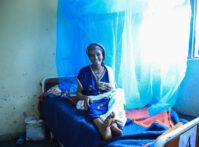“The Traditional image of life in tented sprawling camps no longer tells the full refugee story.”
– Hidden and Exposed: Urban Refugees in Nairobi, Kenya
Coinciding with the end of
UN-HABITAT’s 5th World Urban Forum, a new report and associated video,
Hidden and Exposed: Urban Refugees in Nairobi, Kenya, have been released by the
Humanitarian Policy Group (HPG) at the
Overseas Development Institute (ODI) and the
International Rescue Committee (IRC).
Hidden and Exposed removes the cloak of migration stereotypes and provides an unfiltered look at urban migrants’ struggle for daily survival. Focusing on seven neighborhoods with high refugee concentrations in Nairobi, the authors — through qualitative interviews and secondary data — found a unique, challenging urban environment for thousands of refugees. Aid and development groups often overlook these urban refugees, instead favoring work with traditional established camps on the urban periphery.
The HPG found that Nairobi’s 46,000 registered refugees represent a diverse mix of ethnic groups and nationalities, all trying to secure economic independence and security. While much research has been devoted to the traditional concept of displaced migrants in centralized ex-urban camps, such as Dadaab in Eastern Kenya, urban dwellers are just as vulnerable to insecurity, poverty, and harassment. With nebulous legal rights, facing discrimination and protected by only fragile support systems, the refugee community in Nairobi finds itself in a precarious situation.
In light of the challenges, the research team at HPG offered three basic recommendations as initial steps:
1. Protection:- Address confusion over legal rights to prevent issues of police harassment and community violence.
- Target a subset of donor funds for training local police forces and government agencies.
- Establish partnerships between the UNHCR and the Kenyan government to improve the latter’s Refugee Status Determination System.
- Funnel humanitarian and development aid toward legal aid services while also using innovative strategies to increase dialogue between urban refugees and the surrounding Kenyan communities.
2. Livelihoods:- Carry out surveys to better understand the Nairobi urban economy, including the informal sector.
- Support the government of Kenya in their efforts to help urban refugees to become self-reliant.
- Recognize the transition of refugees from sequestered camps to urban areas and develop an effective response.
- Secure Kenyan government permission for the issuance of work permits for refugees.
3. Service Delivery:- Design aid models to address the unique challenges faced by urban refugees in Nairobi.
- Ensure coordinated and comprehensive services, in conjunction with the Kenyan government and international organizations, to address the needs of the urban refugees and the surrounding communities, with particular attention granted to refugee women and girls.
Fleeing conflict and attracted by the possibility of better jobs, services, or security, thousands of refugees have sought new lives in Nairobi. Yet the reality for many urban migrants is an existence burdened with inadequate assistance, a precarious legal status, and economic and physical insecurity. Through the implementation of these recommendations, HPG hopes to draw attention to these hidden refugees, and offer them the hope of improved livelihoods and effective security.
 A Publication of the Stimson Center.
A Publication of the Stimson Center.







